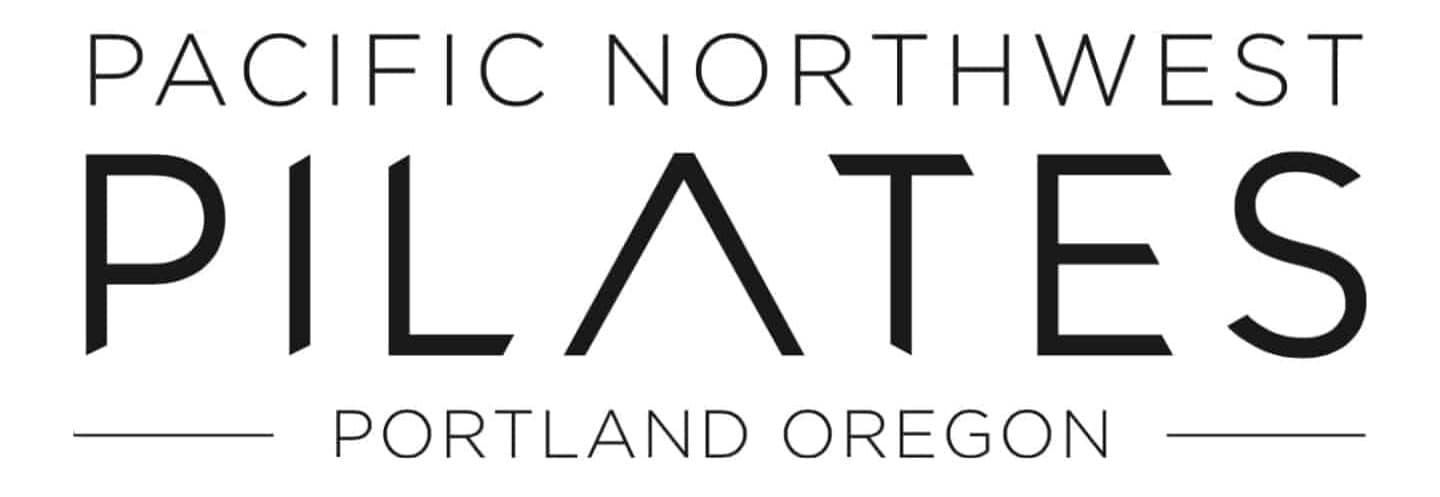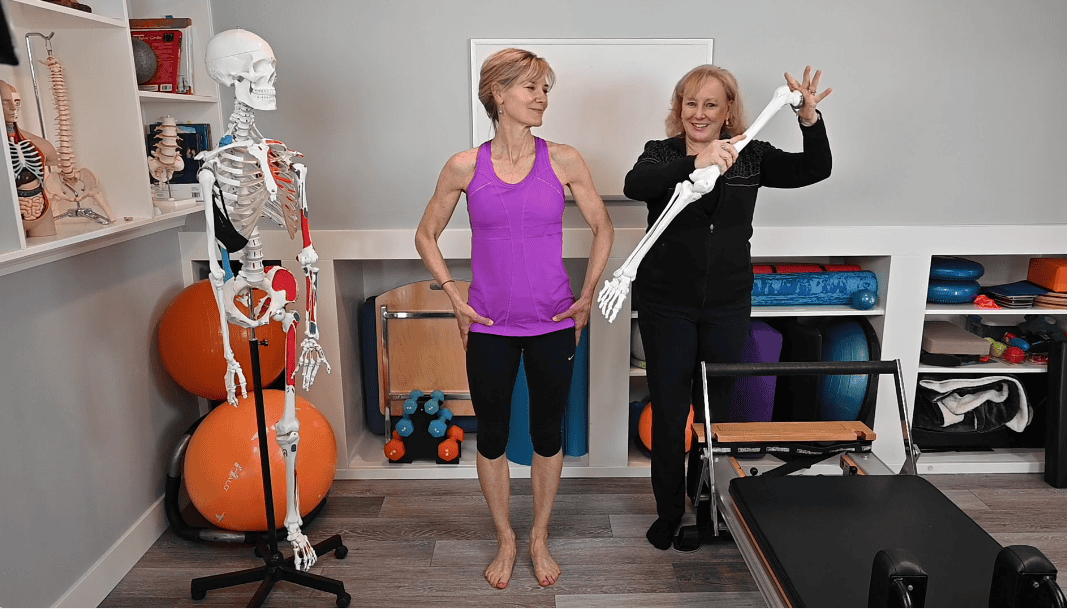In this short clip, Melanie Byford-Young explains genu varum.
Cindi is an active hiker and cyclist who has a structural variation known as genu varum—“genu” meaning knees, and “varum” describing a medial angulation or outward bowing of the legs. When she brings her feet together, her legs naturally form a bowed shape, with a subtle difference between right and left.
When Cindi stands on one leg, you’ll notice her entire leg shifts in order to load the hip, knee, and foot. This creates a slight inward rotation of the whole limb. On the opposite side, the shift is even greater—which is not a flaw, but a necessary adjustment to position her hip directly over her foot.
Looking at a skeletal model, the angulation of a typical femoral head is around 120 degrees. In Cindi’s case, the angle is greater, meaning she must shift and rotate more to seat the head of her femur securely in the socket.
As Pilates instructors, it’s essential to take these structural variations into account. For someone like Cindi, standing with her heels directly under her sit bones in a parallel stance is not comfortable or efficient—it creates bracing in her lower legs and compression in her back. Her position of ease is a wider stance, where her spine appears more centered, her ribs relax, and she can move her pelvis and breathe with efficiency.
The takeaway: don’t put every body into the same box. Honor the shape of each person’s bones, and adjust positions so movement feels natural and sustainable.
Want to dive deeper into mechanics and movement assessment?
Check out these upcoming education opportunities with Melanie Byford-Young that focus on the foot, ankle, and gait—essential tools for any movement professional working with clients affected by inefficient patterns or injuries.
A’s, B’s & C’s of Foot & Ankle Function
Friday, September 19 | 2–5 PM PT | Live on Zoom
Explore the applied anatomy and biomechanics of the foot, and learn how to assess, interpret, and restore dynamic control using Pilates-based strategies. Ideal for addressing conditions like bunions, plantar fasciitis, neuromas, excessive supination/pronation, and more.
Gait Analysis for Movement Professionals
Saturday, September 20 | 9 AM–12 PM PT | Live on Zoom
Learn how to assess and interpret inefficient gait patterns, understand the kinematics of walking, and apply Pilates-based interventions to help clients walk better and move smarter.
Want the full picture?
STOTT PILATES® Injuries and Special Populations is coming November 13–16. This comprehensive course offers deeper insight into post-rehab programming and working safely with clients affected by common injuries, conditions, and movement dysfunctions.
Go Here to Register:

